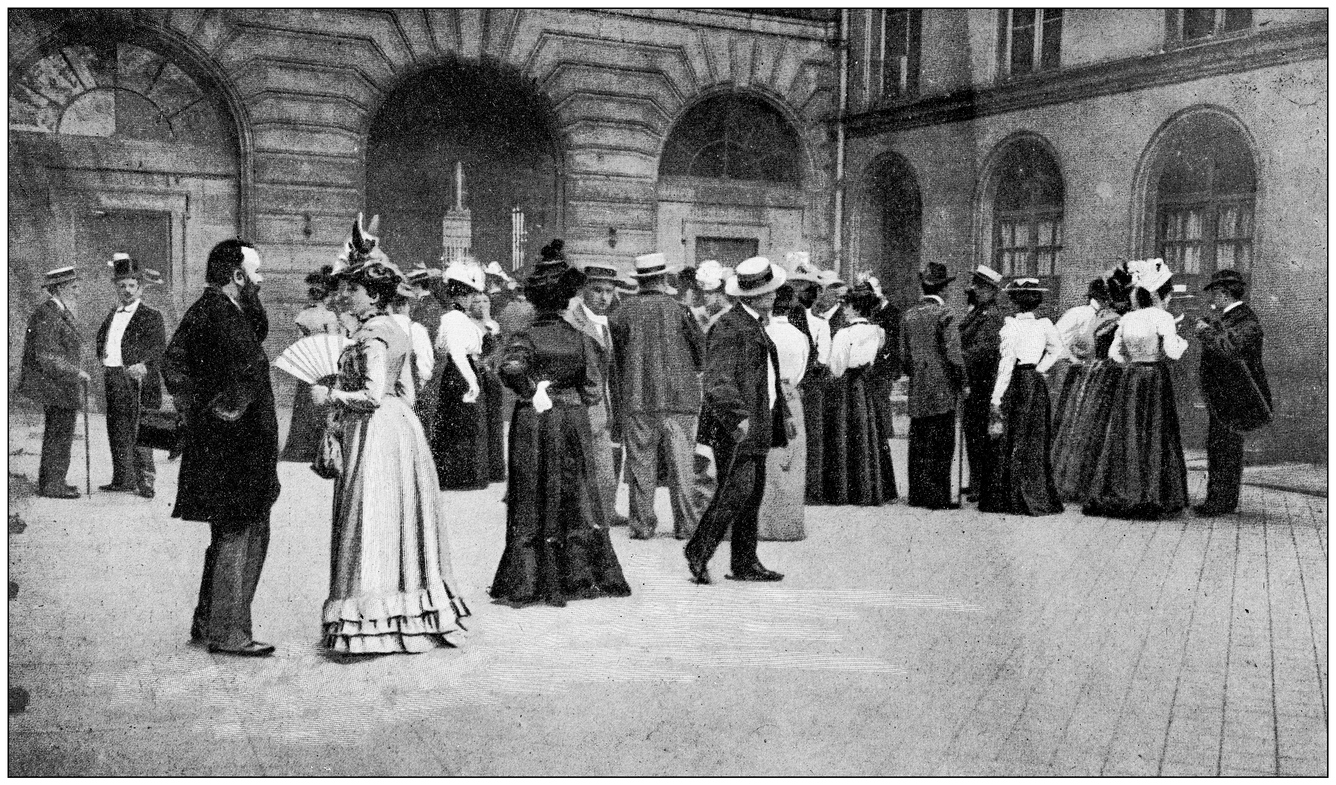In The Queue – How Valuing Your Customer’s Time Leads to Success

6 Feb 2023
Take the time to stop and think about all of the major annoyances in life.
Smudged glasses lenses, spilling coffee on a freshly dry cleaned suit jacket, or even people who constantly interrupt you while you’re trying to make a point.
Okay, fine. I guess these aren’t major annoyances, but you get my point.
Something that all of these scenarios have in common is that you know exactly why they annoy you.
Smudged glasses prevent you from seeing clearly, spilling coffee on your suit means you have to change, and people who interrupt you while you’re speaking… well, that’s just plain awful.
But what about waiting in line? Whether you’re at a McDonald’s or at a movie theatre, show me one person who enjoys waiting in line and I’ll show you a liar.
So what is it about queueing and waiting in line that we hate so much? Is it the impatient guy behind us who won’t stop voicing his loud opinion about how queueing sucks? Is it the lady with a baby who’s been crying for what seems like five years?
No. It’s actually none of these things.
The main reason why everyone hates waiting in line so much is that there is always somewhere they’d rather be.
Time is money, after all. When we’re forced to wait in line for an indefinite amount of time, we’re stuck thinking about how we’d rather be anywhere else but in line. And when lineups start to take too long, we start to question if our time is even valued. At this point, we get irritable and decide to call it quits. This business has just lost us as a customer.
Before we look into the psychology behind why we hate queuing so much, let’s dive a little deeper into the word “queue”.
What is a Queue?
To put it simply, a queue is typically a line of people waiting for something. It’s really that simple.
In fact, dictionary.com literally defines the word queue as “a file or line, especially of people waiting their turn”.
However, the word queue can also be used to describe a braid of hair as well. It’s pretty obvious that we aren’t going to be talking about a braid here, though.
When we use the word “queue” to describe a line of people, it can be used as both a noun and a verb. For example:
- As a noun: John hated waiting in the queue for his iced latte.
- As a verb: John dreaded having to queue up for his iced latte.
While learning about the definition of queuing is likely as boring as actually waiting in a queue for something, it’s vital that we know exactly what we’re talking about before moving on here.
Common Queue Expressions
Throughout your life, you’ve likely heard many different expressions related to the word “queue”.
What could these mean, exactly?
Well, many of them are very simple and similar to each other, with some minute differences.
“In the Queue”
This is just referring to being in line for something. This could be waiting in a digital queue or in a physical lineup. Something we’ll touch on a little later.
“Put it in the Queue”
This is an expression which would likely be referring to a digital request for something. For example, a technical support team receiving more help requests than they can take on. They would likely take a new request and “put it in the queue”, waiting for a help representative to be freed up.
“Standing in a Queue”
Standing in a queue is normally used to describe an actual physical lineup. This is often the most annoying type of queue to be in and is an example of a traditional style queue.
Common Misspellings of “Queue”
Not only do people hate waiting in a queue, but they likely hate spelling the word as well. It’s definitely an English word that succeeds at tripping people up, despite only having five letters to work with. This is especially true for people who don’t have English as their first language. Here are a few common misspellings:
- Queu – Almost there. Just stopped a little short of the finish line.
- Que – See above. Didn’t make it quite as far, though.
- Quque – Well… Not sure where the second Q came from?
- Qeueu – A bit of a reversal on those last four letters. A valiant effort, though.
- Queueu – Crossed the finish line and went a little too far, it seems.
- Queve – I don’t hear a V in there, do you?
There aren’t many five-letter words in the English language that can leave you dumbfounded like this. Sometimes you just can’t remember which order those E’s and U’s go in.
Thankfully, we’re here to help with all of your queue spelling needs.
Common Queue Comparisons
There are a few words that the word queue often gets compared to or substituted for. Since there’s often confusion surrounding these words, it’s best if we explain the differences and similarities between them.
Line or Queue?
Both line and queue are often used interchangeably. But are they actually direct synonyms for each other?
In short, yes. They can mostly be used interchangeably.
However, it goes slightly deeper than that.
A queue is often used to describe people waiting patiently (or not so patiently) for something.
A line can mean a lineup of anything. People, animals, dominoes, the list goes on. By this logic, you wouldn’t normally say something like “look at all of those ducks in a queue”.
In summary, while you can substitute each term for the other, a line is typically used as a broader term to describe just about anything, where a queue is often more specific to people lining up and waiting for something. Keep that in mind.
Cue or Queue?
Ah, homonyms. Complicated little bits of the English language they are.
While these two words are pronounced exactly the same, they mean two completely different things.
The word “cue” is essentially a signal used to provoke an action of some sort. For example, in TV and movies, a cue would be something that happens which immediately signals an actor or actress to either say a line or perform an action.
These two words would be pretty easy to mix up. Just remember that their meanings are not similar.
History of Queues

The word “queue” actually originates from the word “cauda”, which means tail in Latin. This is fitting since long, orderly queues are often shaped like tails.
However, the actual process of queueing dates back to the early 19th century, according to Dr. Joe Moran, author of Queuing for Beginners: The Story of Daily Life from Breakfast to Bedtime.
As the world shifted into a more industrialized setting, queues started to become the social norm. Barter goods traders would set up shop and as people would show up with the intent of purchasing these goods, queues would form.
It also didn’t take long before frustrations started to settle in either. Queues were just as annoying back then, if not more so than now.
Thankfully, we’ve long moved past those days. Coming up with better ways to address queue management as technology has progressed. From physical barriers to virtual queueing, the history of queue management is vast.
Why Do We Queue?
If we hate queueing so much, why exactly do we do it?
Well, to quote Professor Nick Haslam from the Melbourne School of Social Sciences:
“Queuing exists because there is an imbalance between the supply and demand of services.”
This is a pretty spot on and to the point description as to why queues are necessary. As an example, say you go to a movie theatre. There are four cashiers ready to accept money for movie tickets, but there are nine people waiting for tickets. This means that the demand for movie tickets exceeds the ability to supply services, resulting in a physical lineup using a first-come, first-served method.
However, while queueing is often necessary, it’s a less-than-stellar experience for customers. In one survey, businesses reported that 70% of customers will abandon their purchases if they’re forced to wait more than 5 minutes.
Why is this?
Well, because customers value their time. Your product or service likely isn’t important enough to the point where they’re willing to wait ten or more minutes in a line. Maybe they’ve spent all day working and aren’t thrilled about waiting even longer before heading home? Or maybe they’ve got somewhere else to be?
Whatever the reason is, customers will always try to avoid queues.
Types of Queues
As it stands, there are two major types of queues:
- Traditional queues
- Virtual queues
Each has its own set of pros and cons. However, when you’re looking to value your customer’s time as much as they do, there is certainly one clear winner here.
Traditional Queues
Traditional queuing usually refers to people physically waiting in line in order to be served. This could be anything from waiting for food to waiting to renew your license. These types of lineups exist in nearly every industry.
As we’ve mentioned before, these queues occur when the demand exceeds the ability to supply.
But how can you manage a traditional queue?
One common way is to use physical barriers, such as stanchions. This can present a clear area for your customers to line up in.
However, this presents a whole new world of issues for your customers. A labyrinth of red tape will likely stress your customers out, causing them to turn around and exit before they’ve even had the chance to make a purchase.
Another option would be to use either a sign-in sheet or a ticketing system. This eliminates the stress and tediousness of waiting in an actual lineup and allows the usage of waiting rooms.
On the other hand, tickets are easy to misplace and handwriting can sometimes be less than legible. While it’s certainly a step up from red tape lineups, there are still more efficient queue management systems.
As you can see, traditional queues all run into the same problem: They waste your customer’s valuable time.
So what other options do you have?
Virtual Queues

Virtual queueing usually involves software or mobile apps designed to help facilitate the queueing process and remove some of the common problems associated with traditional queues. These problems include:
- Line jumpers
- Stress from red tape mazes
- Poor customer flow management
All of this sounds great, doesn’t it?
But how does one actually get started with implementing a virtual queue?
Well, as we’ve mentioned previously, you’ll need to adopt a queue management software to take full advantage of virtual queueing. One quick trip to Google will show you that there are hundreds of different companies providing software to achieve this goal. How are you supposed to pick the right software for you?
Something like Skiplino’s Queue Management System would be handy here. With a clear goal of reducing customer wait times and streamlining the queueing process, Skiplino’s Queue Management System perfectly addresses many of the glaring issues with the traditional queueing process.
Of course, virtual queues do come with a few cons. While only minor drawbacks, they’re still worth talking about. Switching from a traditional queue management system to a digital one can be a chore for both you and your customers if you choose the wrong software. Be sure to choose queue management software that values ease of use above all else.
The main benefit of virtual queues comes back to our main grievance with physical lines. Instead of forcing customers to get frustrated with an indefinite amount of time waiting, customers get a much better sense of how long they’re going to wait with a virtual estimate.
Not only that, but using queue management software, customers can check into your queue remotely. Be it from work, home, or out for a walk. Because of this, your customers will have a much more positive outlook on your business for valuing their time above all else.
| Type of Queue | Pros | Cons |
| Traditional Queues | Easy to implement | Stressful Wastes too much time Poor customer flow Facilitates line jumping |
| Virtual Queues | Improves customer flow Customers can check in remotely Seeks to value a customer’s time Software often comes with other beneficial features Solidifies the first-come, first-served method | Can be a little harder to implement due to costs and ease of use (Choosing the correct software can drastically cut down on this) |
The Verdict on Queues
When it comes down to it, you’re going to hear all sorts of reasons why people despise queues. From the indefinite wait to the other people waiting in line, queueing can often be a chore that sends customers packing before they even make it halfway through.
Here’s the kicker though: Queueing is an absolutely necessary process in the world today. Many consumers will often spend up to 5 years of their lives waiting in line ups. Crazy to think about, isn’t it?
So what would happen if queueing as we know it ceased to exist? Would McDonald’s lines start to look like a war zone of hungry customers pushing and shoving their way to the front?
Yes. They would.
That’s because the majority of people today have a good sense of how queues function in society. You show up, wait at the back of the line, and you’re served when it’s your turn. Of course, you still get those who cheat the system by attempting to cut in line, but for the most part, people understand how it works.
As long as there is a high demand for a product or service, a queue nearly always exists.
While you can’t eliminate the need for queues altogether, what you can do is make the process as efficient for customers as possible. And that’s exactly what queue management software seeks to accomplish.
Take it from us: There is no better action you can take to improve your customer service than understanding the value of your customer’s time. They’ll thank you for it.
Looking For a Queue Management Solution?

Now that you understand just how frustrating an unmanaged queue can be, why not look to fix it? Not only will you improve your customer’s outlook on your business, but you’ll be saving yourself a ton of headaches as well.
Thankfully, Skiplino is here with the perfect solution. Our Queue Management System comes jam-packed with the features you need to eliminate the annoyances of traditional queuing, such as:
- Mobile queue booking
- An app you can set up on-site for walk-in customers
- Traffic management at all locations
- Reporting and analytics
- Conducting appointments remotely through Virtual Locations
What are you waiting for? Give us a shout. We’ll show you how we can make the queueing process painless for your customers.
Latest



Similar Reads


All Rights Reserved @2024 Skiplino Technologies WLL.

